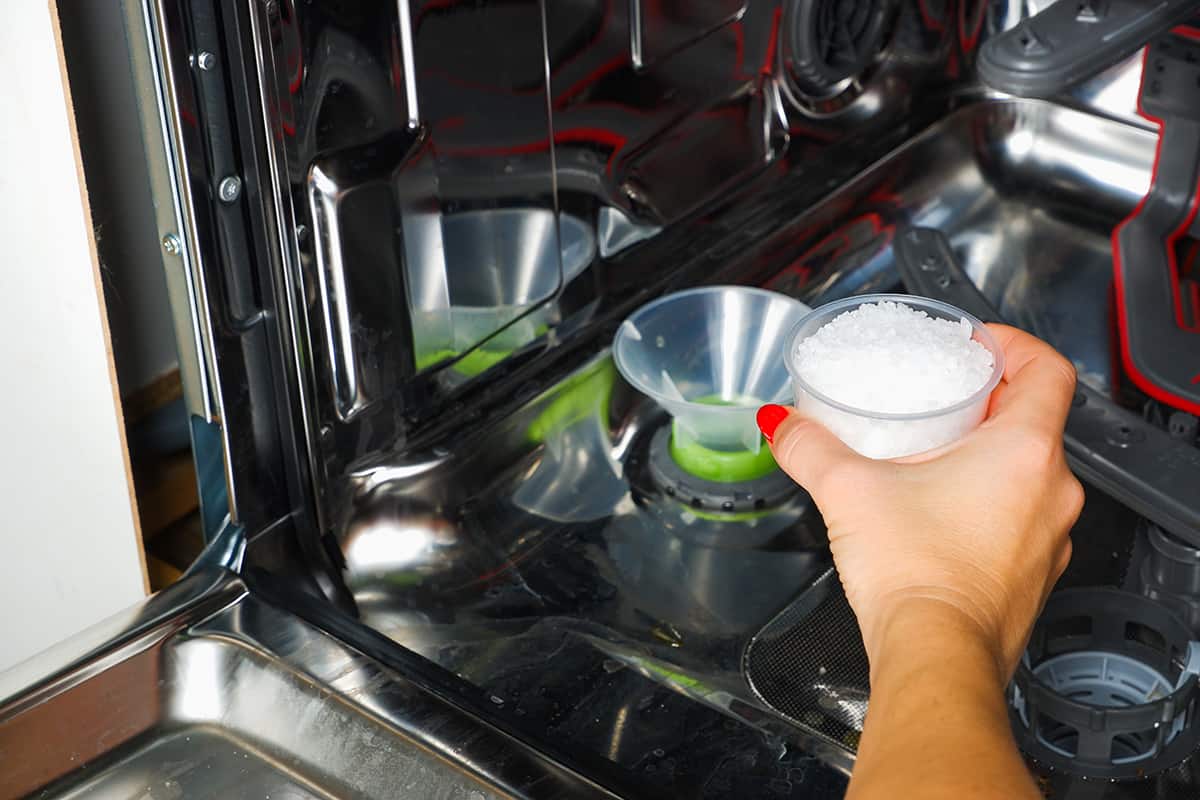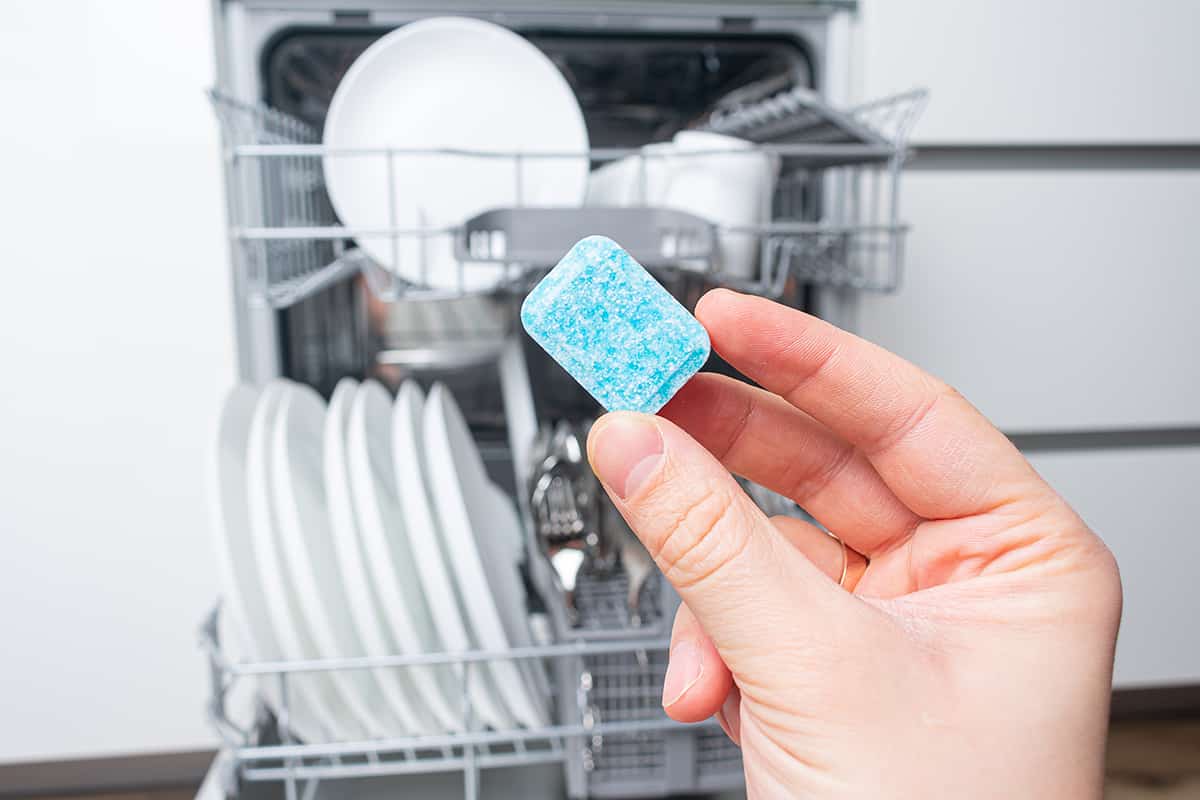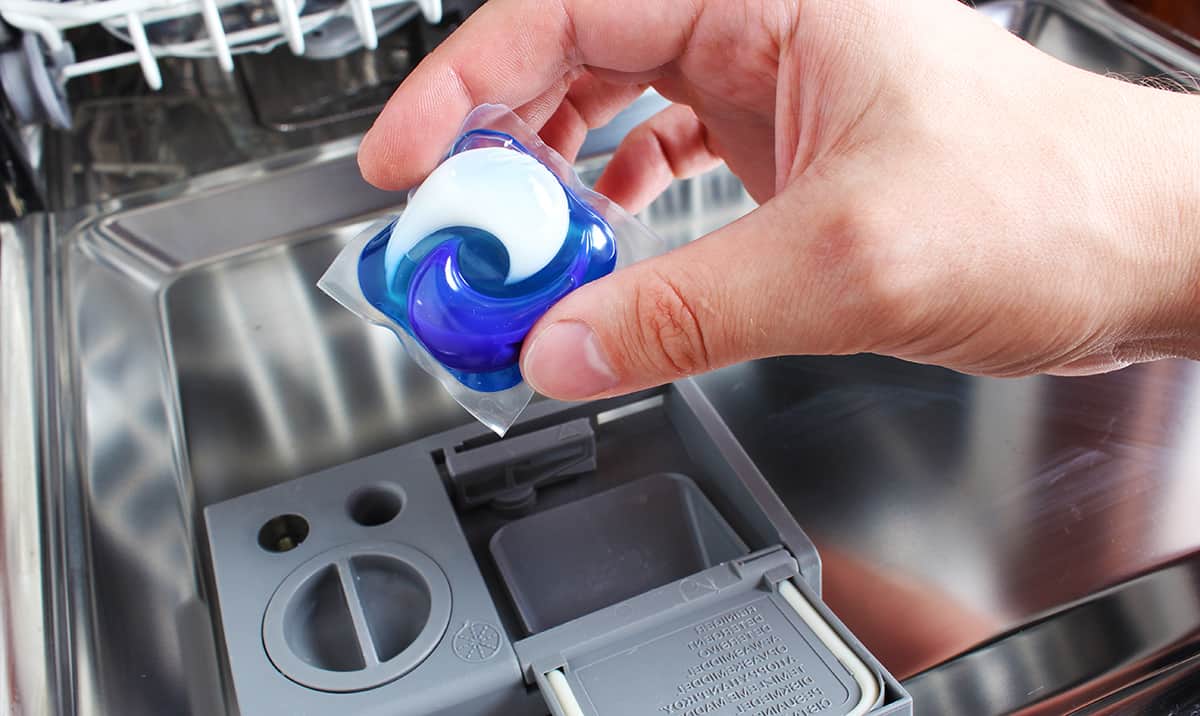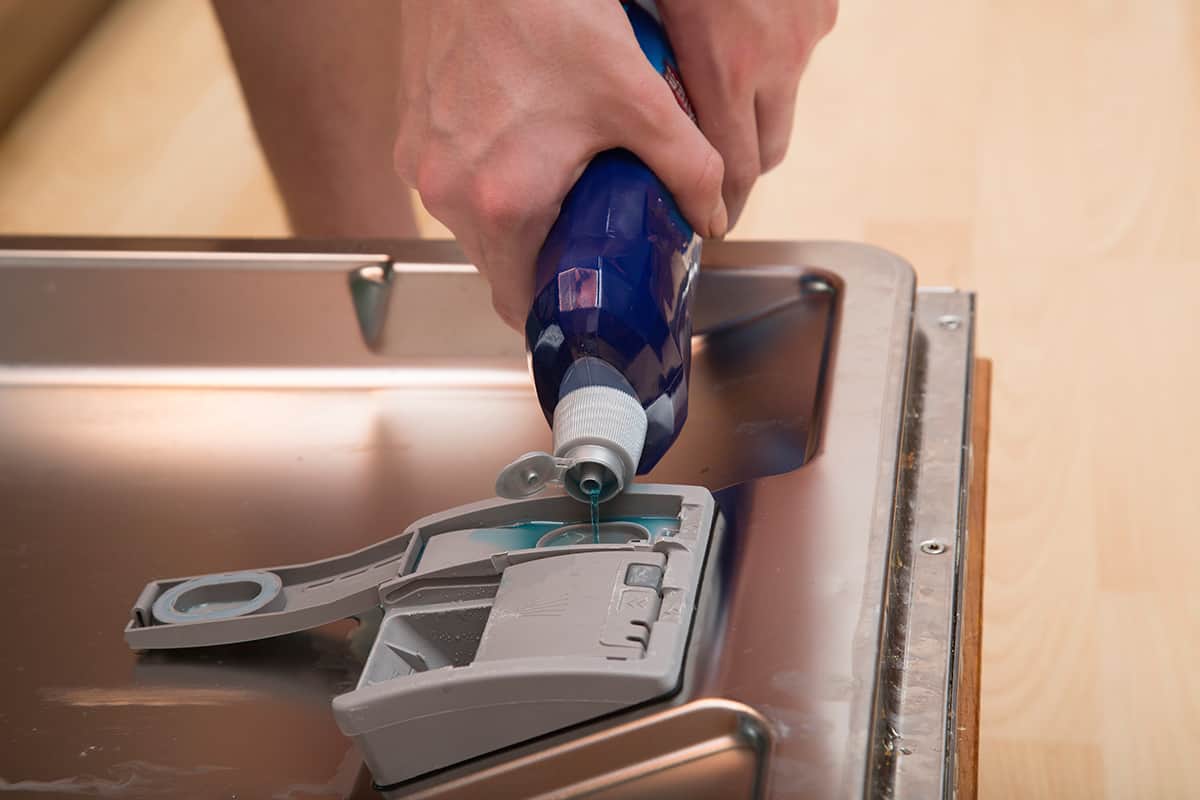There’s a dirty secret for getting the cleanest dishes: less is more. If your dishes come out feeling slimy or looking cloudy, it’s probably because you overloaded the detergent dispenser. So, how much detergent should you add to your dishwasher?
1 to 2 tablespoons of detergent are the typical recommendation for a full load of dishes. The amount of dishwasher detergent should be adjusted based on soil level and type of detergent used. Because detergent dosages can vary by brand, it’s important to read the label carefully.
In this guide, I’ll address the importance of using the right amount of dishwasher detergent, how to get the perfect amount for your dirty dishes, and whether or not dishwasher pods or tablets are better than powder or gel detergent.
Importance of Using the Correct Amount of Dishwasher Detergent
There are a number of things to consider when deciding how much detergent to put in the dishwasher.
If you use too much detergent, the dishes will be left with a soapy film. Aside from making the dishes look and feel grimy, this can also reduce the dishwasher’s cleaning power. Using an excessive amount of detergent can also be costly in the long run.
However, if you use too little detergent, your dishes may not get as clean as they could. This can cause health problems because bacteria and food particles will be left on the dishes.
Using the right amount of detergent is also crucial for reducing wastage. Wasted water and energy from using an excessive amount of detergent contribute to environmental damage. When you use less detergent, you help the environment and your wallet.
How to Measure the Perfect Amount of Dishwasher Detergent
The cleanliness of your dishes and the effectiveness of your dishwasher depend on using the correct amount of dishwasher detergent, so measuring it out is essential. The following are some guidelines for determining the appropriate detergent dosage:
- Use measuring spoons or cups— The majority of detergents come with measuring cups and spoons from the manufacturer. These are made to scoop and pour the ideal dose of detergent for your dishwasher.
- Refer to the instructions on the detergent package— Check the label on the detergent you’re planning to use, as the recommended amount may vary by brand.
- Use less for concentrated detergents— Depending on the load size, you may need to use less of a concentrated detergent than a less concentrated one. In order to determine the proper dosage, refer to the product’s instructions.
- Consider the level of soil on the dishes— You may need to use a little more detergent than usual if the dishes are particularly dirty. However, make sure you never go over the suggested limit.
- Experiment with different brands and types of detergent— There could be a range in how much detergent is needed. Find the best dishwasher detergent for your machine and the level of soil on your dishes by trying out a few different brands and types.
How to Properly Fill the Dishwasher Detergent Dispenser

Avoid wasting any more water or detergent than is required by filling the dishwasher’s detergent dispenser to the proper level. It can also help save money by reducing detergent waste during refills.
Detergent is typically dispensed from a separate dispenser in modern dishwashers. Dispensers are designed for specific brands and types of detergent, so it’s important to use the correct one.
In addition, regularly cleaning the dispenser can prevent a buildup of detergent and other debris, which can affect the dispenser’s performance and cause clogs.
Does Your Dishwasher Need Rinse Aid?
While your dishwasher can operate without filling the rinse aid compartment, there are several reasons why you should consider using it.
- Remove spots and streaks— By lowering the surface tension of the water, rinse aid makes it easier for the water to simply slide off the dishes, removing any lingering spots or streaks.
- Dry dishes faster— To expedite drying time, use a rinse aid to reduce the number of water droplets left on the dishes after washing.
- Prevent water marks— Water marks on dishes can be avoided with the help of rinse aid, which helps to minimize the amount of water that pools on the dishes.
- Prevent hard water buildup— The minerals in hard water can be dissolved by using a rinse aid, which will help keep your dishes and dishwasher spotless.
- Improve the overall cleaning performance— The effectiveness of a dishwasher in removing stubborn spots, streaks, and food particles from dishes can be enhanced by using rinse aid.
Dishwasher Detergent vs. Pods and Tablets

Different types of dishwashing detergent, such as dishwasher detergent, dishwasher pods, and dishwasher tablets, each have their own unique advantages and disadvantages.
Dishwasher detergent can be either a gel or a powder and is added to the dishwasher via the detergent dispenser. It’s been around the longest and comes in the most varieties of formulations and fragrances, making it the most common type of dishwasher detergent.
Pods, packs, or packets for dishwashers are pre-measured packets of detergent meant to be dropped into the dishwasher’s detergent dispenser. They make life easier because you won’t have to measure or scoop your detergent anymore.
Dishwasher tablets are a lot like pods, but they’re bigger and usually have a harder shell. They also take longer to dissolve than pods and have a specific spot in the dishwasher where they should go. Some of these detergents have an added rinse aid, while others have a special formula for hard water or tough stains.
Why Are Dishwasher Pods Better Than Detergent?
Even though pods can be costlier to use per load, they’re objectively better in many ways.
Convenience: Dishwasher pods are pre-measured and easy to use, eliminating the need for measuring and scooping detergent.
- Less Mess— The pods don’t create any mess because they come in a sealed package. However, if you leave the pods in a warm place, the packaging can break down and leave a huge mess in your cabinets.
- Less Waste— As only one pod is required per load, there is less of a possibility of using too much detergent than with traditional liquid detergent.
- Consistency— Dishwasher performance is more stable when using pods because each one contains the same amount of detergent.
- Variety— Some pods have an extra rinse aid, while others have a different formula to deal with hard water or tough stains.
How to Use Dishwasher Pods

Here’s a quick rundown of how to use dishwasher detergent pods the correct way.
- Check the instructions on the pod package— It is important to read the package instructions before using any pods because different brands may have different suggestions for use. After all, nobody knows about dishwasher pods better than the maker!
- Use the correct compartment— Most dishwashers have a specific spot for pods; when using a dishwasher that takes pods, be sure to put the pod in its proper spot, as different dishwashers require different types of detergent. If your dishwasher doesn’t have a pod dispenser, you will have to use gel or powder detergent. Leaving the pod in the tub will cause it to dissolve prematurely during the initial filling phase.
- Do not unwrap or cut the pod— Do not unwrap or cut the pod before placing it in the dishwasher; this will prevent the pod from dissolving properly.
- Close the compartment lid— Be sure to close the lid tightly after inserting the pod to keep it in place during the washing cycle.
- Run the dishwasher—Start the dishwasher and let the pod dissolve and clean your dishes. Feel free to run any wash cycle that uses detergent.







Leave a Reply